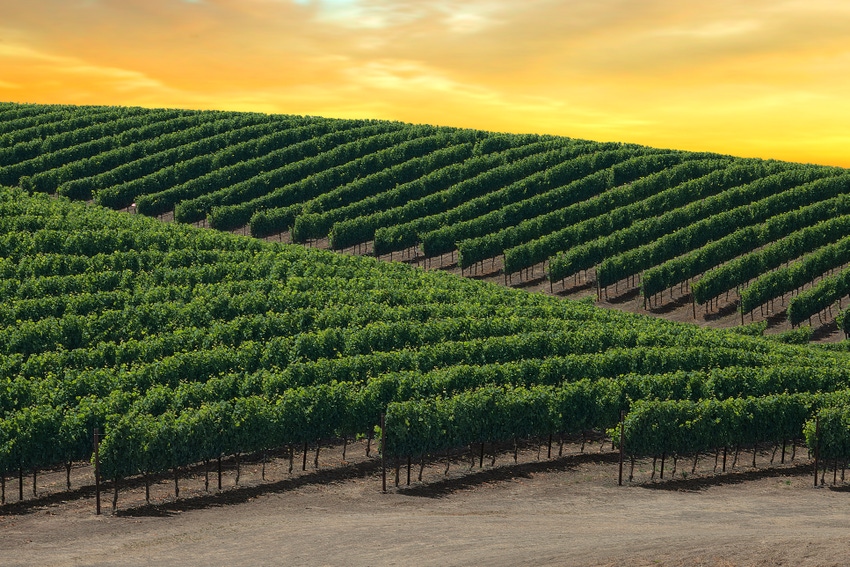
As the berries continued to swell during the second week of July in Stagecoach Vineyard’s 600 acres of Napa Valley wine grapes, viticulturist Gabrielle Shaffer was much more upbeat about her crop that she was a year ago.
Last season was a tough one, she says. Production was down significantly, following a winter with little rainfall and cold weather during set that resulted in a lot of shatter and hens and chicks. Here’s her take on 2016:
“We had a really good set this year. Although the bunches haven’t closed, yet, the clusters look like they should be nice and full. And, with much more rain this winter than we’ve had in a few years, the vines have enough canopy and growth to support the amount of fruit that’s on them. Now, we’re focused on managing our irrigation to slow canopies and prevent the berries from growing too big. We should end up with the kind of crop this year that winemakers look forward to.”
The Stagecoach Vineyards operation includes 16 varieties of wine grapes, spread over more than 1,400 acres of volcanic chapparal slopes at more than 1,800 feet above the valley floor, just east of Oakville, Calif.
Shaffer expects veraison to start in late July, with Cabernet Franc and Merlot along with some white varieties probably being the first to begin coloring. As a result, harvest could get underway the last week of August. Last year, crews began picking the grapes in mid-August.
Cabernet Sauvignon is Stagecoach Vineyard’s primary variety. Shaffer expects it, as well as most of the others, to produce an average or slightly bigger crop this year. Production in the blocks of Merlot, Petit Verdot, and Syrah is likely to be average to a little less.
Shaffer’s deficit irrigation program is designed to stress the vines enough to enhance fruit quality without jeopardizing the health of the vines.
In addition to visual assessment of the crop, she uses a variety of technologies to help monitor the level of water stress in her vineyards and more precisely schedule irrigation timing and duration. They include soil moisture probes, pressure chamber measurements and evapotranspiration monitoring.
Because of the time required to collect the samples needed for the pre-dawn and mid-day pressure chamber measurements, staff can only reach about 15 of Stagecoach Vineyards’ 205 blocks per day.
However, with her experience Shaffer knows which blocks should be tested more frequently and which ones can go longer between the procedures without risking too much water stress.
This year, for the first time, she’s added an aerial thermal imaging service to further refine her irrigation program. The images are made every two weeks during the season to identifying any areas where vines need more or less water to maintain the desired balance of vine growth and fruit development.
As usual, the exposure of the hillside blocks of grapes to windy conditions plus several heat spikes have suppressed any powdery mildew development so far this season, Shaffer notes.
However, red blotch, a viral disease with symptoms similar to those of leaf roll disease, is high on her list of crop threats. Little is known yet about red blotch, which discolors leaves and impairs grape ripening and, ultimately, quality.
“It’s a big part of our disease control focus every year,” she says. “We keep a close eye on the vineyards and test any suspicious vines for the virus. Based on the results, we’ll either rogue individual vines or rip out entire sections of a block to eliminate the virus.”
About the Author(s)
You May Also Like




